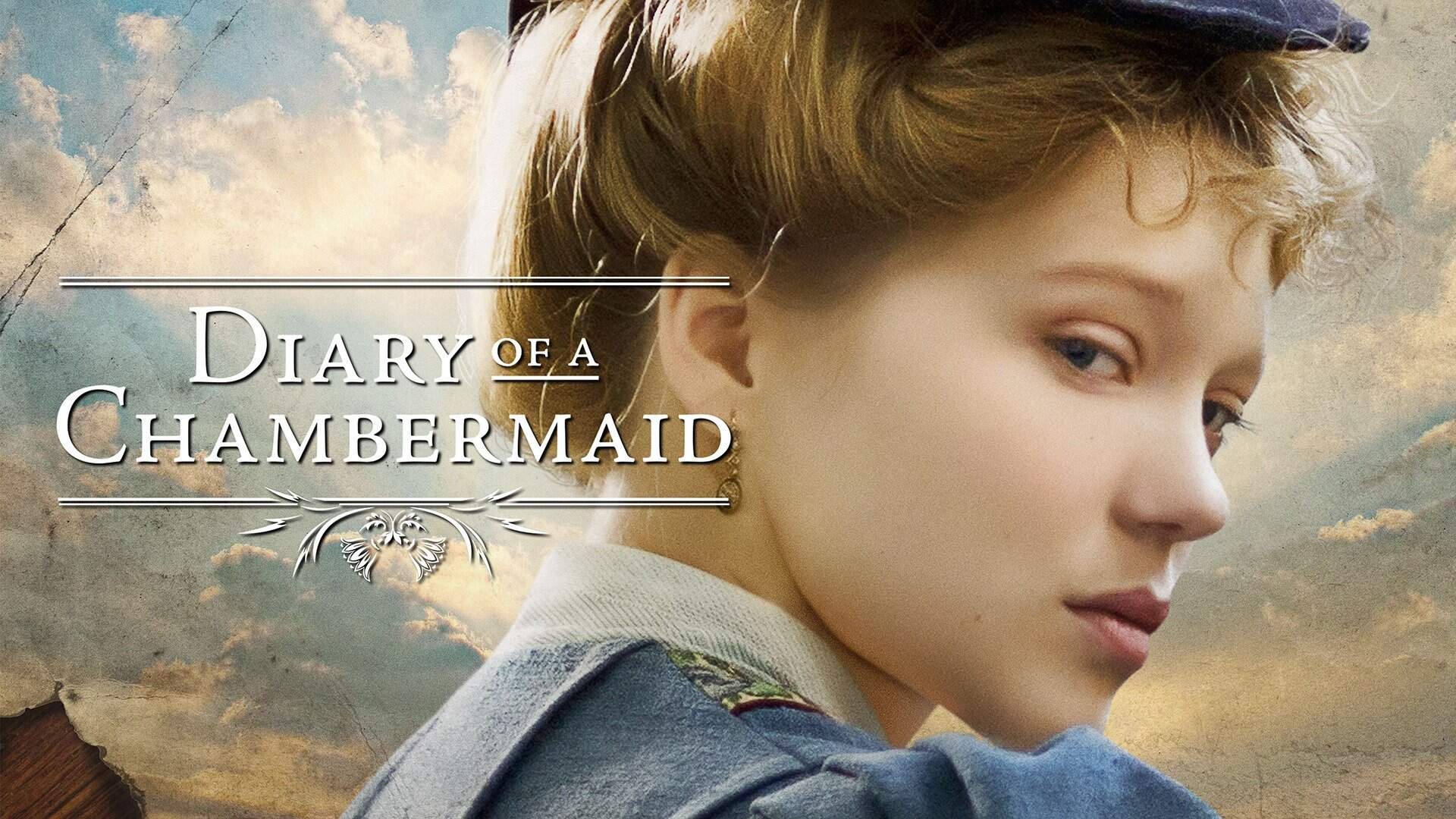
Welcome to the fascinating world of “Diary of a Chambermaid”! This critically acclaimed film takes us on a journey through the intriguing life of a chambermaid and unveils the secrets and mysteries hidden behind closed doors. With its captivating storyline, superb performances, and stunning cinematography, “Diary of a Chambermaid” has truly captivated audiences worldwide. In this article, we will delve into 37 intriguing facts about this remarkable movie, shedding light on its production, cast, and the impact it has made on the film industry. So sit back, relax, and get ready to discover the ins and outs of this cinematic gem that has left audiences spellbound since its release. Whether you’re a fan of classic cinema or simply love thought-provoking stories, “Diary of a Chambermaid” is guaranteed to leave a lasting impression. Let’s dive in!
Key Takeaways:
- Diary of a Chambermaid” is a captivating French film that explores class struggles and societal norms in early 20th-century France. It received positive reviews for its compelling storytelling and atmospheric cinematography.
- The movie offers a visually stunning portrayal of the time period, with meticulous attention to detail in costumes and production design. It delves into themes of power, desire, and social inequality, leaving a lasting impression on viewers.
Diary of a Chambermaid was released in 2015.
Directed by Benoît Jacquot, this French drama film is an adaptation of the 1900 novel of the same name by Octave Mirbeau.
The film stars Léa Seydoux in the lead role.
Léa Seydoux delivers a captivating performance as the titular chambermaid, Celestine.
Diary of a Chambermaid explores the social hierarchy of early 20th-century France.
The film delves into the class struggles and complexities of the French society during that time period.
It is the third film adaptation of the novel.
Prior to Benoît Jacquot’s version, Diary of a Chambermaid was adapted for the big screen in 1946 and 1964.
The movie received positive reviews from critics.
Critics praised the film for its atmospheric cinematography and compelling storytelling.
Diary of a Chambermaid premiered at the 65th Berlin International Film Festival.
The film had its world premiere in February 2015, where it was well-received by audiences and critics alike.
The costumes in the film were meticulously designed.
The production team paid great attention to detail, accurately recreating the fashion of the time period.
The movie explores themes of power, desire, and manipulation.
Diary of a Chambermaid delves into the complex dynamics between the characters, showcasing the darker aspects of human nature.
The film was shot on location in various parts of France.
The picturesque settings add to the overall visual beauty and authenticity of the movie.
Diary of a Chambermaid was nominated for several awards.
The film garnered recognition for its acting performances, screenplay, and art direction.
The original novel was a scathing critique of bourgeois society.
Octave Mirbeau’s novel aimed to expose the hypocrisy and corruption prevalent in the upper classes.
The movie offers a modern interpretation of the novel.
Benoît Jacquot infuses his own vision and style into the story, creating a fresh take on the classic tale.
The soundtrack of the film complements the haunting atmosphere.
The music enhances the overall mood and adds depth to the emotional journey of the characters.
Diary of a Chambermaid is a thought-provoking exploration of societal norms.
The film challenges traditional notions of class, gender, and power dynamics.
The movie received recognition at prestigious film festivals.
Diary of a Chambermaid was screened at several international film events, including Cannes and Toronto.
The screenplay was co-written by Benoît Jacquot and Hélène Zimmer.
The collaborative effort resulted in a compelling narrative with well-rounded characters.
The film’s cinematography captures the beauty and harshness of the time period.
The visual aesthetics immerse the viewer in the world of Diary of a Chambermaid.
Diary of a Chambermaid raises questions about power dynamics and social inequality.
The film prompts audiences to reflect on the impact of societal structures on individual lives.
The movie gained a loyal following of fans.
Diary of a Chambermaid resonated with viewers who appreciated its artistic merits and thought-provoking themes.
The film portrays the struggles faced by women in a patriarchal society.
It sheds light on the limited choices and injustices experienced by women during that time.
The movie has a runtime of approximately 96 minutes.
Diary of a Chambermaid offers a concise yet impactful storytelling experience.
The film’s nuanced performances bring the characters to life.
The talented cast breathes authenticity into their respective roles.
Diary of a Chambermaid explores themes of sexuality and repression.
The film portrays the complexities of human desire in the face of societal constraints.
The production design accurately reflects the time period.
The attention to detail in the set design adds to the overall immersive experience of the film.
The movie offers a glimpse into the lives of the working class in early 20th-century France.
It provides insight into the daily struggles and aspirations of those outside the upper echelons of society.
Diary of a Chambermaid explores the darkness that lurks beneath the surface of seemingly respectable households.
The film unveils the hidden secrets and moral corruption behind closed doors.
The film’s pacing keeps viewers engaged throughout.
Diary of a Chambermaid maintains a steady rhythm, keeping the audience invested in the story.
The movie contains elements of mystery and suspense.
There are unexpected twists and turns that keep the audience guessing.
Diary of a Chambermaid offers a critique of the power dynamics between the rich and the working class.
The film highlights the exploitation and mistreatment faced by those in servitude.
The film features strong performances from the supporting cast.
The ensemble cast contributes to the overall depth and believability of the story.
Diary of a Chambermaid presents a visually stunning portrayal of early 20th-century France.
The cinematography showcases the beauty of the country’s landscapes and architecture.
The movie received accolades for its costume design.
The elegant and accurate period costumes add to the visual richness of the film.
Diary of a Chambermaid explores the tension between desire and constraint.
The film delves into the complicated nature of human relationships within a rigid social structure.
The screenplay masterfully captures the essence of the original novel.
The adaptation is faithful to the themes and tone of Octave Mirbeau’s work.
The film immerses viewers in the sights and sounds of early 20th-century France.
The attention to detail in creating an authentic atmosphere is evident throughout the movie.
Diary of a Chambermaid is a haunting and thought-provoking cinematic experience.
The film lingers in the mind of the viewer, sparking discussions and introspection.
The movie leaves a lasting impression on those who watch it.
Diary of a Chambermaid’s impact extends beyond the screen, leaving audiences contemplating its themes and messages long after the credits roll.
Conclusion
Diary of a Chambermaid is a captivating movie that takes viewers on a journey through the life of a chambermaid, revealing the intricacies and complexities of her experiences. From the talented cast to the stunning cinematography, this film is sure to keep audiences engaged from start to finish. With its compelling storytelling and thought-provoking themes, Diary of a Chambermaid offers a unique perspective on class dynamics and societal norms.
Whether you’re a fan of period dramas or are simply looking for a thought-provoking movie to watch, Diary of a Chambermaid is definitely worth adding to your must-watch list. Its blend of historical context, compelling characters, and intriguing plot makes it a standout film that will leave a lasting impression on viewers.
So, grab some popcorn, find a comfy spot on the couch, and get ready to immerse yourself in the mesmerizing world of Diary of a Chambermaid.
FAQs
Q: Is Diary of a Chambermaid based on a true story?
A: No, Diary of a Chambermaid is not based on a true story. It is an adaptation of the 1900 novel “Journal d’une femme de chambre” by Octave Mirbeau.
Q: Who directed Diary of a Chambermaid?
A: Diary of a Chambermaid was directed by Benoît Jacquot.
Q: What is the main theme of Diary of a Chambermaid?
A: The main theme of Diary of a Chambermaid revolves around class dynamics and the power struggles that exist within society.
Q: Who are the main actors in Diary of a Chambermaid?
A: Diary of a Chambermaid stars Léa Seydoux, Vincent Lindon, and Clotilde Mollet in the lead roles.
Q: What is the setting of Diary of a Chambermaid?
A: The movie is set in France in the early 20th century.
Q: Is Diary of a Chambermaid available on streaming platforms?
A: Yes, Diary of a Chambermaid is available on various streaming platforms like Netflix and Amazon Prime.
Was this page helpful?
Our commitment to delivering trustworthy and engaging content is at the heart of what we do. Each fact on our site is contributed by real users like you, bringing a wealth of diverse insights and information. To ensure the highest standards of accuracy and reliability, our dedicated editors meticulously review each submission. This process guarantees that the facts we share are not only fascinating but also credible. Trust in our commitment to quality and authenticity as you explore and learn with us.


